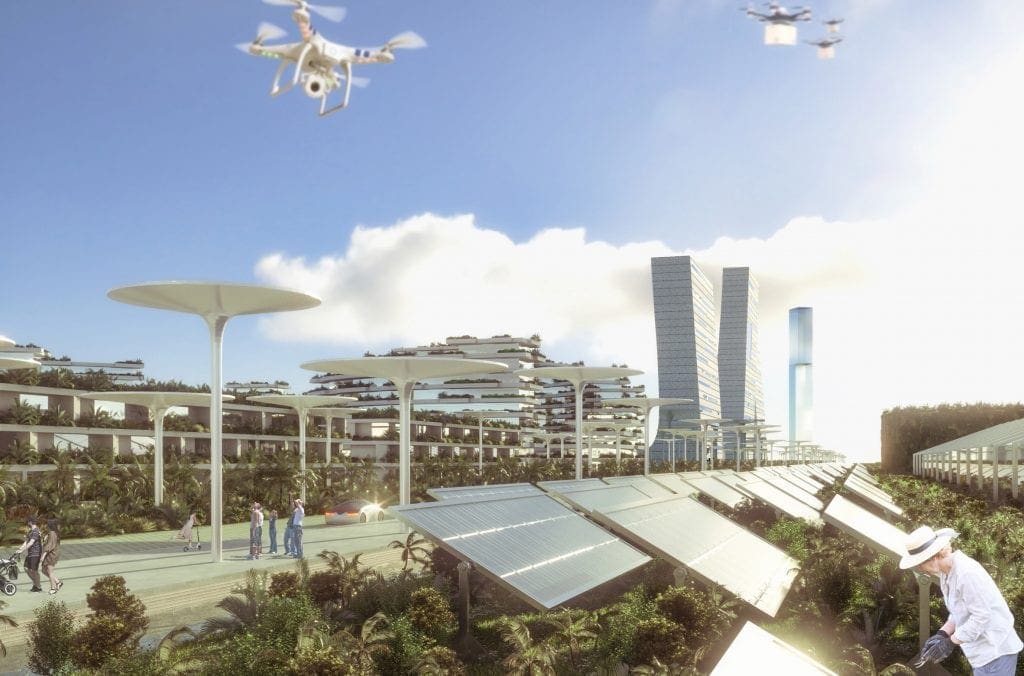Milan-based architecture firm Stefano Boeri Architetti has unveiled innovative designs for a nature-infused smart city in Cancun, Mexico that will serve as a model for resilient and sustainable urban planning. Created for Honduras-based textile conglomerate and property developer Grupo Karim, ‘Smart Forest City – Cancun’ is a proposed alternative to plans for a shopping district in the area. The masterplan would reforest a 557-hectare site — currently used as a sand quarry for hotels — and create mixed-use development that would be completely food and energy self-sufficient.
The proposed Smart Forest City – Cancun would house 130,000 residents as well as 7,500,000 plants of 400 different species selected by botanist and landscape architect Lauri Gatti. More than 200,000 trees would be planted to create a ratio of 2.3 trees per inhabitant, while the remainder of the vegetation would be mostly shrubs, bushes, green roofs and vertical gardens. “Thanks to the new public parks and private gardens, thanks to the green roofs and to the green facades, the areas actually occupied will be given back by nature through a perfect balance between the amount of green areas and building footprint,” the press release stated.


Source: INHABITAT









